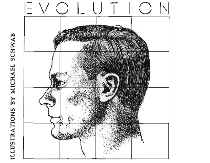Articles/Essays – Volume 08, No. 3
Introduction
When this special issue of Dialogue was first conceived, it became evident that the phrase “science and religion” has quite different meanings for different people. It was clear that the issue could not be comprehensive enough to please everyone, and therefore, decisions had to be made about what kinds of manuscripts to solicit. Generally, we decided to omit topics which had been covered extensively in either Mormon or non-Mormon literature, such as: technical discussions about ecology, population, evolution, or the age of the earth; reconciliation of the scriptures with science through allegorical interpretation or through imputation of certain technological innovations to God; and the use of science-based analogies to explain religious concepts. Topics which are peripherally related to science and religion, such as ethics, were also omitted. Manuscripts were solicited and selected with the hope that they would both raise new issues in the discussion of science and religion among Mormons and stimulate responses. This issue will not be a success unless there are responses to it in the form of articles replying to those contained herein or developing topics which are not included here.
Richard F. Haglund Jr.’s article on science and religion is an excellent treatment of this often misunderstood relationship. As Haglund points out, religion and science have more in common than most realize. Understanding that commonness as well as their respective uncommonness should help scientists and religionists to work together more harmoniously in their mutual quest for truth.
Duane E. Jeffrey points out the pitfalls that face us when that common ground is obscured. As he illustrates with careful historical documentation, Mormonism had a much broader ground of agreement with science on the question of evolution in the nineteenth century than did most other religions. When that ground was narrowed through mistrust and misunderstanding, it led to an attack on and distrust of science that still has deep roots in Mormon culture. There is a strong need for articles of this kind which examine the neglected field of Mormon intellectual history.
Hugh Nibley’s fascinating if somewhat esoteric study of early Christian views of cosmology also suggests a fruitful field for future scholarly exploration. Certainly little is understood and more needs to be known about the historical relation of some of our theological tenets and cultural beliefs.
That science and religion contend for allegiance is dramatically illustrated in the interview with Henry Eyring and in the three interviews with scientists in “Dialogues on Science and Religion.” Here we have case studies of how individuals solve or attempt to solve conflicts between these two world views. Some readers may note some factual errors in the responses by one of the scientists. Please keep in mind that these interviews were not published in order to communicate factual information but rather to examine the personalities of some Mormon scientists and to examine the interaction of their professional and religious lives. The manner in which they may have resolved conflicts will undoubtedly not be equally accept able to all individuals who have faced the same or similar problems.
Even though we received several excellent articles on the social and psycho logical sciences, they could not be included in this special issue because of space limitations. The editors of Dialogue have expressed an interest in developing
future special issues in these subject areas. In terms of truly meaningful (for the individual and society) conflicts between science and religion, the social and psychological sciences offer potentially far more formidable challenges to religion than do the natural sciences. They clearly deserve more space in Dialogue than a part of this issue could have afforded them.
There were many other topics which we had hoped to include. A few of them are: the new astronomy and the scriptures; current topics such as the role of Mormons in the controversy concerning the treatment of evolution and creation in school books; a review of the use within the Church of teleological arguments for God’s existence; an examination of the psuedo-scientific literature in Mormon culture; an investigation of possible conflict between our drive for scientific progress, our belief in God’s omniscience, and our millennial expectations; and scientism in the Church. Each reader will undoubtedly add other topics to the list. Over the years since Dialogue began, there have been periodic complaints from readers about the lack of articles on science and religion. It should be clear that there has been no lack of topics which could have been published in Dialogue. Rather, there has been a shortage of authors who were willing to spend the time and energy needed to write good articles. The editors are more than willing to publish sound articles on science and religion, if someone will write them. The challenge is clear.


 Back to full Issue
Back to full Issue

